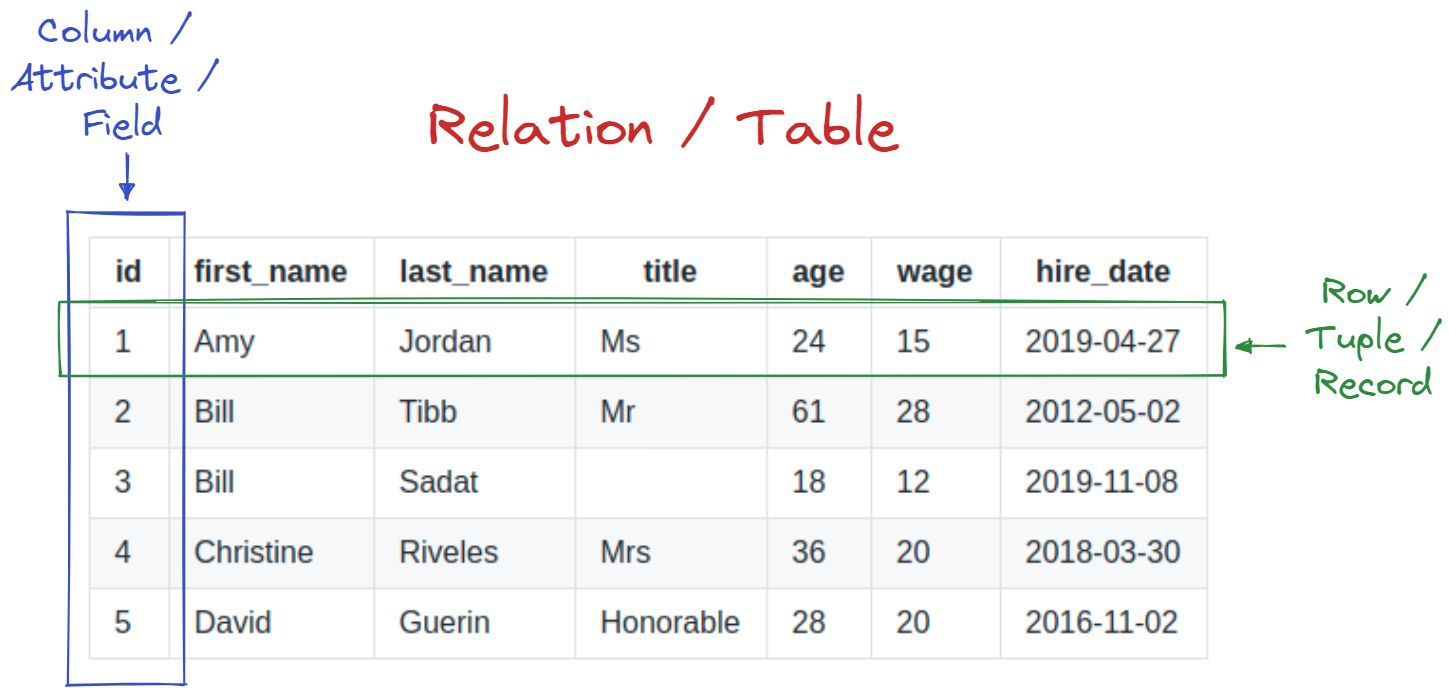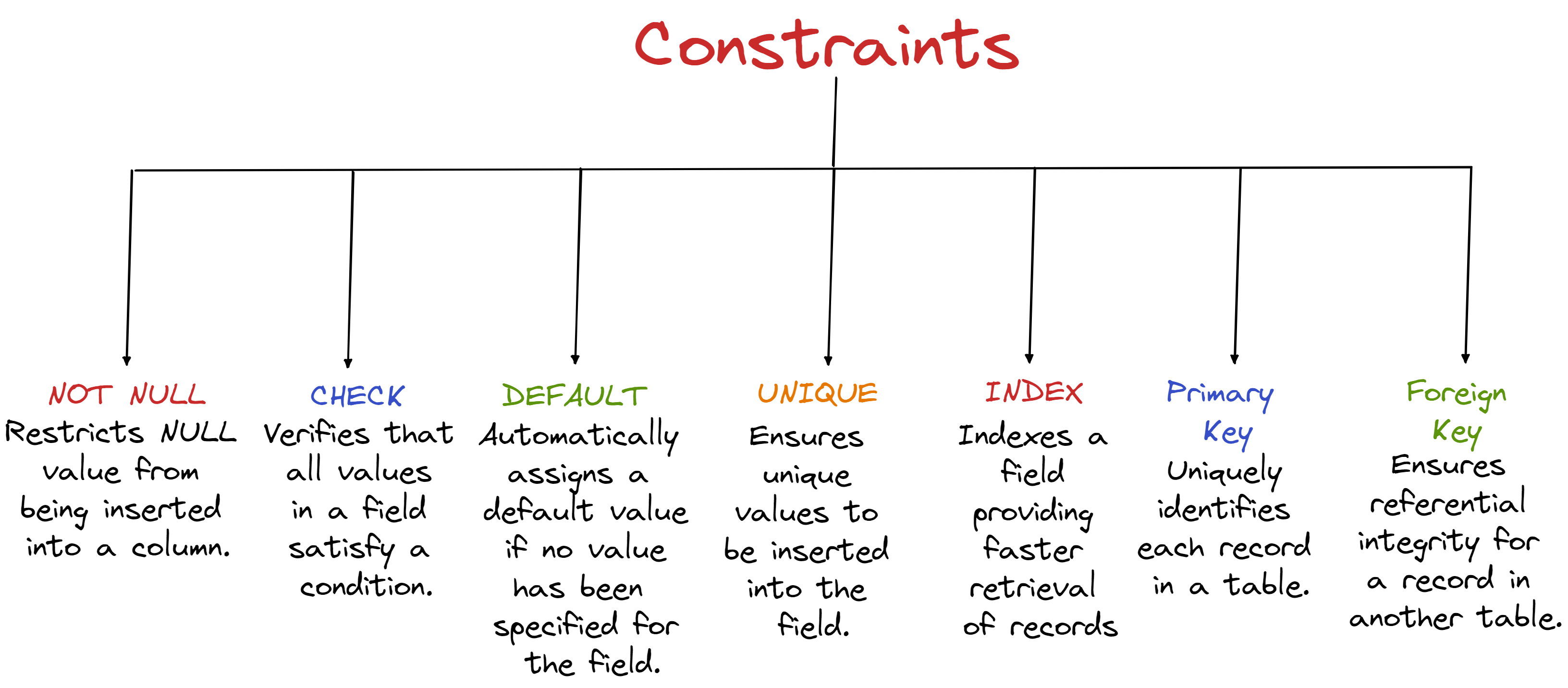B. SQL Databases
1. What is a Database?
Is an organized collection of structured information, or data, typically stored electronically in a computer system.
2. What is DBMS?
Database Management System (DBMS) is a software that is used to define, create, and maintain a database and provides controlled access to the data. It ensures that our data is consistent, organized, and is easily accessible by serving as an interface between the database and its end-users or application software.
3. What is RDBMS?
Relational Database Management System (RDBMS) is a software used to store, manage, query, and retrieve data stored in a relational database, a structured database which organizes information into tables (relations), rows and columns. Most modern database management systems like MySQL, Microsoft SQL Server, Oracle, IBM DB2, and Amazon Redshift are based on RDBMS.
4. What is the difference between a DBMS and RDBMS?
RDBMS is a more advanced version of DBMS as it stores data in the form of a collection of tables, and relations can be defined between the common fields of these tables. DBMS on the other hand, stores data as file.

5. What are Tables and Fields?
A table is an organized collection of data stored in the form of rows and columns. Columns, also known as fields, can be categorized as vertical and rows, also known as records, as horizontal.

6. What is Data Integrity?
The is the overall accuracy, completeness, and consistency of data. It also refers to the safety of data in regard to regulatory compliance, such as GDPR compliance and security. It is maintained by a collection of processes, rules, and standards implemented during the design phase.
7. What are Constraints in SQL?
Constraints are used in SQL to specify the rules concerning data in the table. These constraints can be applied for single or multiple fields in an SQL table either during the creation of the table or after creating using the ALTER TABLE command.



